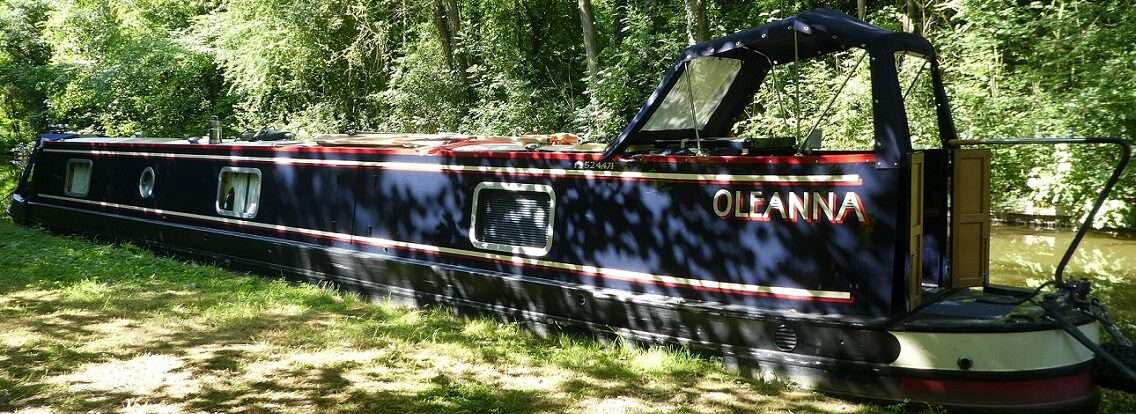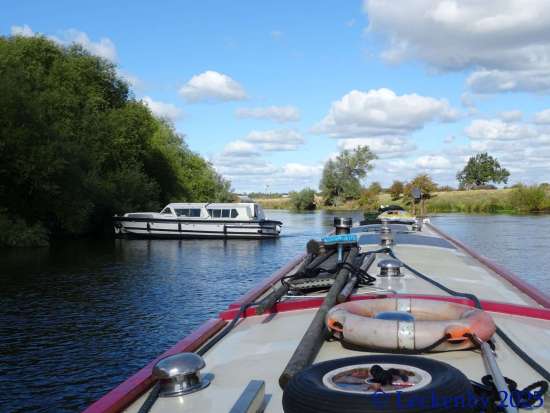Trent Junction
Trent Junction was shrouded in mist this morning. It got worse as the hours went on, the sailing club opposite becoming a misty blurr by mid morning. No rush to do anything today. Mick was still snotty, but improving and so far, fingers crossed I’ve not succumbed to it. Papers were read in bed as the white mist enveloped more of our view.

Brandy snaps, Potato bobbing, underpass trees, contrary jasmine and frying pan discipline were subjects on the Geraghty zoom. Some people had views of the sky, others didn’t.
Chicken sausage sarnies for breakfast, not as good as a pork banger, but a more healthy treat from the freezer.

I spent much of the morning going through what flora we’d be needing for panto. So many roses and after the near mutiny a couple of weeks ago I’m hoping there will be enough money in the budget for what we need. I put together a long email with links and off it went to the Production Manager, fingers crossed.
Over the weekend Chippy posted a video across their social media with quite a nice view of my model.
https://www.facebook.com/share/r/1D8BXXUZQ1
Emails about props started whizzing around again today, so hopefully things will get cracking.

Oleanna’s sinks needed some attention, a clean out of the pipes. A few days ago I bought some bicarb of soda and white vinegar. Reading up about it, you pour the bicarb down the plug hole, then add a similar quantity of vinegar. Pop the plug in and leave it for a while before rinsing everything through with a kettle of boiling water.

I had a go at the bathroom sink first. The bicarb took a bit of persuading to go down the plug, then adding the vinegar created an expected frothing, plug in quickly. I then took the shower plug to bits, cleared out all my hair, then did the bicarb and vinegar trick. This of course on the shower would only reach the section before the gulper pump. It was left to fizz, hoping it was doing what it’s meant to.

An hour later I returned to the bathroom, kettle poured down the plug hole and pump turned on. Well I’m not convinced it’s done much other than a chemical reaction, but it was fun watching the frothing!

Time for a walk, somewhere I’d not been recently. I opted to walk up the Erewash to Long Eaton Lock. Here a footbridge spans the canal, but to reach it you have to literally walk around the houses to find it. Along Milner Road are a series of single story mills. These mills superseded the larger multistoried lace factories that are across the canal. The large factories were driven by steam and had built in fire breaks and staircases on the outer walls should a fire break out. These smaller factories from around 1903 had DC powered motors to drive the machinery.


Across the bridge into West Park. This is a huge park which gradually expanded through the decades, it started off at 17 acres in 1905 and by 1949 it had expanded to 127 acres. Long Eaton is prone to flooding, so the park is used as a flood plane capable of holding 67 million gallons of flood water which can then be slowly released into the Trent. The flood banks make for a nice walk around the southern side of the park.


I then walked down snickets (ginnels, alleyways). More factories passed and quite a selection of graffiti, the best artist being Soap. Then down towards the river across fields close to Sawley. I chanced walking across the golf course, only one shout of FOUR! I think aimed at me, I had waited quite a while and hoped to be out of all possible areas of golf balls. I didn’t get hit, so that was fine.

Back along the river bank to Trent Lock, the cooling towers looking quite majestic in the lowering sunshine. I came across an article the other day in the AJ about them. The Twentieth Century Society had applied for them to be listed, but sadly their application was denied.

Back at Oleanna there were more props emails to look at whilst I put together a roast pork slop, the last left over pork, onion, red pepper, mushrooms, and tomatoes, brought up to heat and then popped on the stove top. A long chat with Lizzie up in Crick and then the final episode of Blue Lights was watched. Now just have to catch up on Bake Off and start Riot Women.

0 locks, 0 miles, 1 slow morning, 3 freelancers emailing away, 300 plus roses, 26 garlands, 1 box tissues blown, 2 sinks fizzed, 1 not so bothered cat, 99 minutes brisk walking, 1 nearly empty freezer, 1 last cooling tower sunset.


































































































































